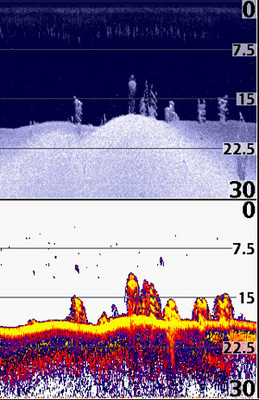In lakes and impoundments that lack significant natural cover (weedbeds, rocks, timber, etc), and even in some bodies of water that possess these structural features, artificial fish cribs often serve as key locations for fish activity. Serving as both a local foundation for the food chain (providing a surface for baitfish-attracting algae and microorganisms to grow) and a source of cover for baitfish and young gamefish, cribs attract anglers in search of crappies, bass, walleye, and other gamefish that find the cribs to be reliable sources of food and protection. Artificial cribs made of plastic or wood are easily identified by sonar, and Humminbird’s Down Imaging and Side Imaging technologies provide outstanding, high-resolution views of these artificial fish-attracting structures.
To read the rest of this article on using Humminbird Down Imaging and Side Imaging to examine fish cribs, check out the link below:
The rest of my collection of introductory articles on Humminbird’s Down Imaging technology is available at this link:


